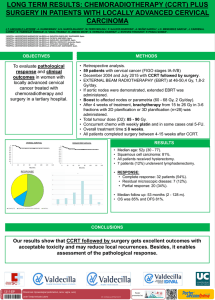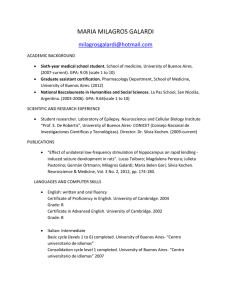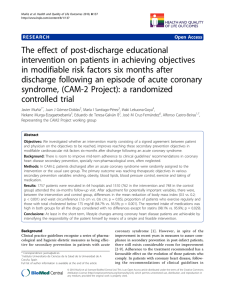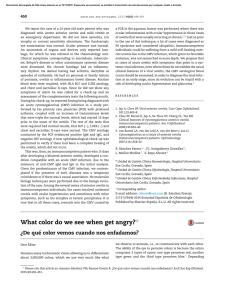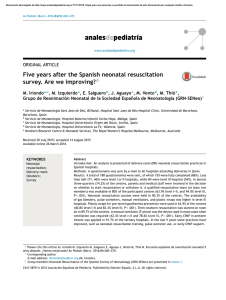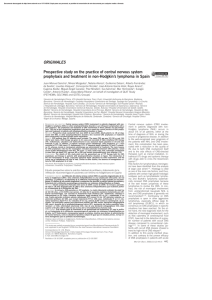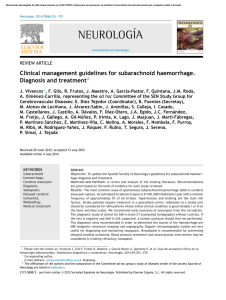Este póste 122 diseñado p impresora Los marcad póster ya ti los
Anuncio
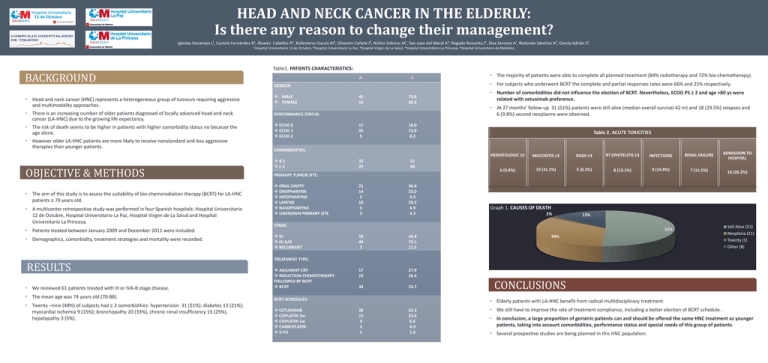
HEAD AND NECK CANCER IN THE ELDERLY: Is there any reason to change their management? Iglesias Docampo L¹, Castelo Fernández B², Álvarez Cabellos R³, Ballesteros García AI⁴, Ghanem Cañete I², Núñez Sobrino JA¹, San Juan del Moral A³, Rogado Revuelta J⁴, Díaz Serrano A¹, Redondo Sánchez A², García Adrián S⁵. ¹ Hospital Universitario 12 de Octubre, ²Hospital Universitario La Paz, ³Hospital Virgen de La Salud, ⁴Hospital Universitario La Princesa, ⁵Hospital Universitario de Móstoles. Table1. PATIENTS CHARACTERISTICS: BACKGROUND N • Head and neck cancer (HNC) represents a heterogeneous group of tumours requiring aggressive and multimodality approaches. • There is an increasing number of older patients diagnosed of locally advanced head and neck cancer (LA-HNC) due to the growing life expectancy. PERFORMANCE STATUS: • The risk of death seems to be higher in patients with higher comorbidity status no because the age alone. ECOG 0 ECOG 1 ECOG 2 OBJECTIVE & METHODS • The aim of this study is to assess the suitability of bio-chemoradiation therapy (BCRT) for LA-HNC patients ≥ 70 years old. • A multicenter retrospective study was performed in four Spanish hospitals: Hospital Universitario 12 de Octubre, Hospital Universitario La Paz, Hospital Virgen de La Salud and Hospital Universitario La Princesa. • Patients treated between January 2009 and December 2011 were included. • Demographics, comorbidity, treatment strategies and mortality were recorded. • The majority of patients were able to complete all planned treatment (84% radiotherapy and 72% bio-chemotherapy). • For subjects who underwent BCRT the complete and partial responses rates were 66% and 25% respectively. GENDER: MALE FEMALE • However older LA-HNC patients are more likely to receive nonstandard and less aggressive therapies than younger patients. % 45 16 73.8 26.2 11 45 5 18.0 73.8 8.2 • Number of comorbidities did not influence the election of BCRT. Nevertheless, ECOG PS ≥ 2 and age >80 ys were related with cetuximab preference. • At 27 months' follow-up 31 (51%) patients were still alive (median overall survival 42 m) and 18 (29.5%) relapses and 6 (9.8%) second neoplasms were observed. Table 2. ACUTE TOXICITIES COMORBIDITIES: 0-1 ≥2 32 29 52 48 HEMATOLOGIC ≥3 MUCOSITIS ≥3 RASH ≥3 RT EPHITELITIS ≥3 INFECTIONS RENAL FAILURE ADMISSION TO HOSPITAL 6 (9.8%) 19 (31.1%) 5 (8.2%) 8 (13.1%) 9 (14.8%) 7 (11.5%) 16 (26.2%) PRIMARY TUMOR SITE: ORAL CAVITY OROPHARYNX HIPOPHARYNX LARYNX NASOPHARYNX UNKNOWN PRIMARY SITE 21 14 3 18 3 2 34.4 23.0 4.9 29.5 4.9 3.3 Graph 1. CAUSES OF DEATH 2% 13% STAGE: III IV-A/B RECURRENT 51% 10 44 7 16.4 72.1 11.5 17 10 27.9 16.4 34 55.7 34% Still Alive (31) Neoplasia (21) Toxicity (1) Other (8) TREATMENT TYPE: RESULTS • We reviewed 61 patients treated with III or IVA-B stage disease. ADJUVANT CRT INDUCTION CHEMOTHERAPY FOLLOWED BY BCRT BCRT • The mean age was 74 years old (70-88). BCRT SCHEDULES: • Twenty –nine (48%) of subjects had ≥ 2 comorbidities: hypertension 31 (51%); diabetes 13 (21%); myocardial ischemia 9 (15%); bronchopathy 20 (33%), chronic renal insufficiency 15 (25%), hepatopathy 3 (5%). CETUXIMAB CISPLATIN 3w CISPLATIN 1w CARBOPLATIN 5-FU CONCLUSIONS • Elderly patients with LA-HNC benefit from radical multidisciplinary treatment. 38 15 4 3 1 62.3 24.6 6.6 4.9 1.6 • We still have to improve the rate of treatment compliance, including a better election of BCRT schedule . • In conclusion, a large proportion of geriatric patients can and should be offered the same HNC treatment as younger patients, taking into account comorbidities, performance status and special needs of this group of patients. • Several prospective studies are being planned in this HNC population.
